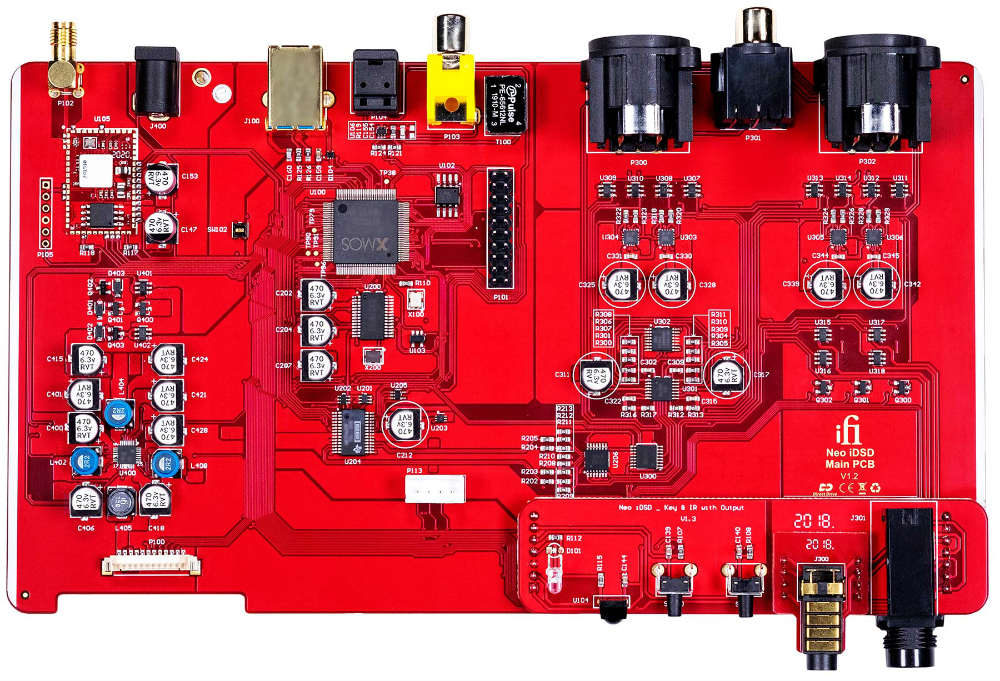Yes, because the unit JA measured was severely faulty, due to software issues.
I pushed S&M (sales & marketing, not 50 Shades of Grey) to get SP to publish a comment to that effect and have a fixed unit submitted. But even the software fix was given low priority. AFAIK a definitive software version wit complete fixes was released late in 2021. As I have not tested it, I do not know if it REALLY fixes everything.
The iDSD Pro unit has a number of switches which I would call measure/listen switches. With JA some of the underlying circuit configuration switches inside the unit (all softwre driven) were not responding correctly and were "stuck" in "listen".
Unfortunately, after I had already signed off the "golden sample" a new programmer (who is actually a good programmer) came onto the project, after it was in effect completely out of my hands. This Programmer started from an earlier version where all the various switches worked incorrectly and not from the version I had signed off.
The "golden sample" was used in software development and the software on it altered and later the same now actually not aurum but excrementvm sample was used to set factory testing standards. Because someone in AMR/iFi had decided to play big boss capitalist and reorganised a lot of things to be more "professional' the company started to turn out more and more products with major issues at launch.
It meant my control over the product and the production process was severely eroded and placed in the hand of incompetent chinese "engineers" (I use the term engineer in the loosest of all sense, these people would not pass examinations for the lowest level of service tech in Europe, despite having chinese university EE degrees).
I actually referred to the original software the iDSD Pro shipped with as the "Kendathu" release, because of the numbers of bugs, after the famous scene from "Starship Troopers".
I even raised it at board level and gave my own version "We can ill afford another Klendathu" speech. Didn't help.
Not if the software is correct.
BTW, the measurements here have the same software bug:
https://www.audiosciencereview.com/...ts-of-ifi-idsd-pro-dac-with-comparisons.6119/
There are currently some tests being done on a unit with a more recent software version:
https://www.facebook.com/groups/826563705068569/
Yes, among most other ifi & AMR products that needed actual design.
Nope, just bad programming that turned the feedback loop switching permanently to "tube+"
The iDSD Pro literally has the same schematic for the Headphone Driver/Line Driver section as the iCAN Pro and measures essentially the same, you can see that here:
https://www.audiosciencereview.com/...fi-pro-ican-headphone-amplifier-review.12247/
The circuit is really very simple. The 4 DAC's output is "mixed" together (giving a 6dB improvement over using a single DAC Chip for HD and Noise and THD & N) followed by a passive LC filter, (optional) volume control and then the line driver.
The line driver has a circuit that allows either an overall feedback loop, or one where the input device is outside the feedback loop (that is meant to be only active in the "tube +" setting). This switching was stuck permanently on. So naturally there is a lot of HD, as you would expect from a tube or jfet stage without loop feedback.
I designed this one as well. And honestly, IF the software configures it correctly, the iDSD Pro is a LOT better, especially subjectively with the "listen" switches set appropriately and if you "like" the kind of sound that comes from gear I design. The Pro does all that and then some more.
That said, I would not spend my own money on a "Pro" set but get the Zen's and upgrade the external power supplies to get the most from them. I still think the Pro Sounds better, but not in any proportion to the extra expense. It is an indulgence I cannot justify.
BUT, if I was already considering to spend 800 USD on an iDSD Neo, which as USB DAC is technically 100% identical to the Zen DAC (II - I if not using MQA decoder) it may be worth upping the ante and getting a second hand pro as this seems to have finally a firmware that works without major bugs.
Honestly, if the Pro was selling at 999 USD, which was the target pricing at the time of it being designed, or even 1,299 USD accounting for cost overruns I'd consider it worth spending my own money, as it has a few really unique options that produce a sound I personally prefer to the Zen DAC. But at more than double that, I do not feel the iDSD Pro is competitive as product. But get a bargain on the 2nd hand market, I'd take it at 1,200 USD over a new iDSD Neo any day.
Thor


